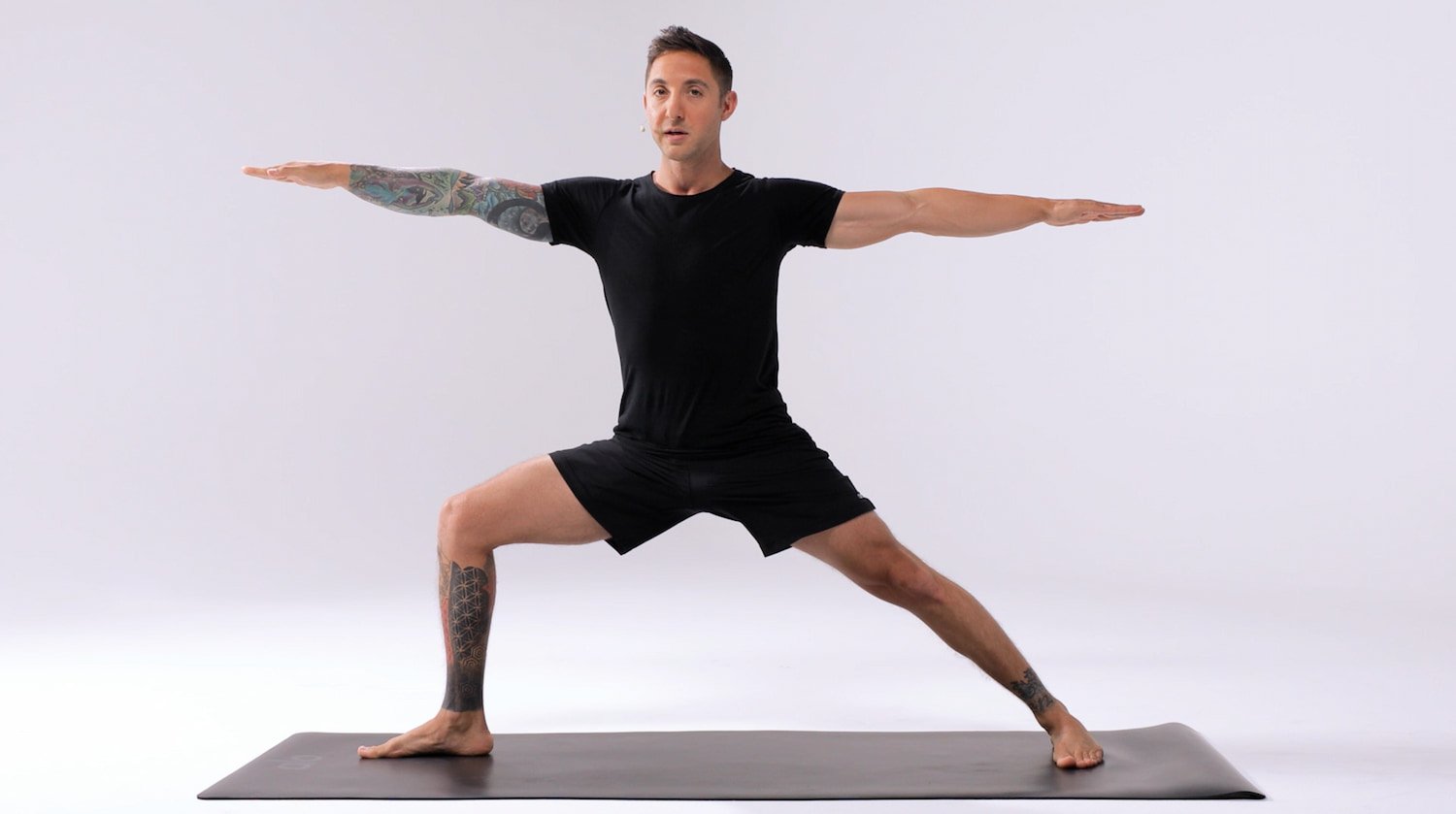Pose Breakdown: Warrior II
Get in your fighting stance. Warrior II (Virabhadrasana II), the second in a collection of three poses, builds focus, ferocity, and a strong foundation for the rest of your practice. If you’ve ever taken any level of Vinyasa class, you’ve probably done it! It’s central to the Dancing Warrior sequence and makes a great transition pose between lunges, wide-legged poses, and even one-legged balancing poses. In Ashtanga Yoga, Warrior II is part of the primary sequence.
While Warrior II can make you feel tough, work against tensing up. Ideally, you’re calm in your resolve, so watch your shoulders and don’t force your body into the form.
This pose is suitable for beginners, but it’s not just a beginner pose. As you continue your practice, keep fine-tuning and exploring Warrior II and how it feels in your body, because it’s only as basic as you make it!
Benefits of Warrior II Pose
Opens your hips and chest
Strengthens your lower body
Increases circulation and energy
Helps ground and focus your practice
Contraindications
Proceed with caution if you have any issues with your knees or ankles.
How to Do Warrior II Pose
1.
Start in Mountain Pose at the top of your mat.
2.
Step your left foot back and come into a High Lunge.
3.
Open your hips and point your rear foot at a 90-degree angle, parallel to the short side of your mat.
4.
Sink deeper into your legs, align your front knee directly above your front ankle, align your spine vertically, and extend your arms horizontally.
5.
Relax your shoulders down and press out through your fingers.
6.
Turn your head to bring your gaze out over your front middle finger of your extended arm.
Follow Up Poses for Warrior II Pose
Peaceful Warrior
Extended Side Angle
Triangle Pose
Warrior III
Warrior II Meaning and Mythology
Virabhadrasana roughly translates to “Hero Friend Pose,” with “vira” meaning “hero,” “bhadra” meaning “friend,” and “asana” meaning posture. The poses tell the story of Daksha-Yajna, the origin of the hero friend, which appears throughout Hindu mythology in several different texts. The accounts vary, but here’s a broad overview.
Shiva’s first wife was named Sati. Sati’s father, a creator god named Daksha, disliked Shiva intensely, and one day he held a sacrifice and invited all the gods except for Shiva and Sati. Sati went anyway, and Dahska further insulted her and her husband. She was so angry that, depending on which version you’re reading, she set herself on fire with the power of her mind or she leapt into the sacrificial flames.
Overcome with grief and rage, Shiva cut off one of his dreadlocks (called Jata in Hindu tradition). Born from that lock was Virabhada, along with Bhadrakali, a goddess. On Shiva’s command, Virabhadra went back to wreak havoc.
Upon returning to the party, Virabhadra cleared out the party and cut off Daksha’s head. Once everything cooled down, Shiva revived him and replaced his head with a goat head. Sati reincarnated and became Shiva’s wife again as Parvati. This is the version repeated in Light on Yoga by BKS Iyengar, but texts differ wildly. In some, Virabhada even defeats the god Vishnu with a trident.
While the Warrior series of poses are meant to illustrate this myth — and contain elements of ancient sculptures of deities, like the position of the feet — they most likely didn’t appear in yoga practices until the 20th century. Different yogis interpret the poses in different ways, but Myths of the Asanas by Alanna Kaivalya and Arjuna van der Kooij lists the pose narrative as follows:
Warrior I: Virabhadra rising from the hair lock.
Warrior II: Virabhadra drawing his sword.
Warrior III: Virabhadra putting Daksha’s head on a stick!
Put your Warrior into practice with Briohny Smyth’s Beginner Power Vinyasa series, available for free with a 14-day trial to Alo Moves.








